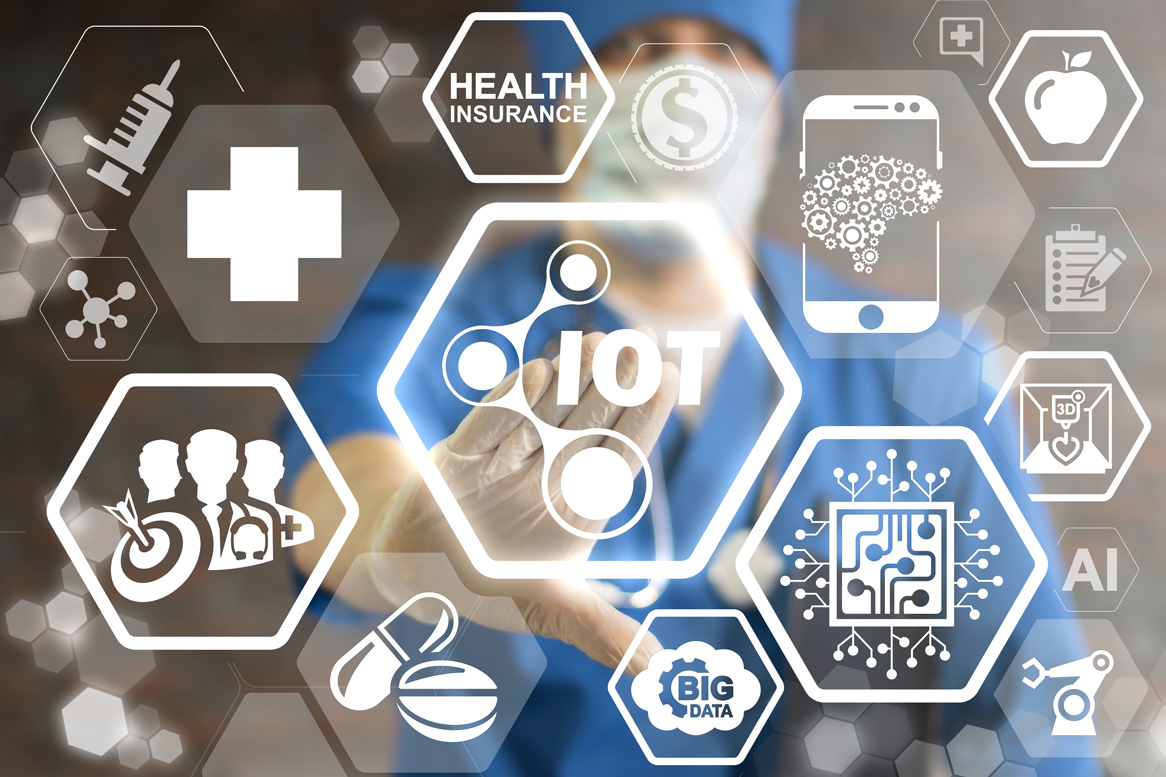How the Internet of Medical Things Can Revolutionize Healthcare

The Internet of Medical Things (IoMT) could be a game-changer for global healthcare—lowering costs, improving efficiencies, and driving better outcomes. Know the advantages and challenges of these digital innovations.
A growing, aging population, an aging health workforce, and a rapid increase in chronic diseases—all these factors contribute to a distressing projection: A shortage of 18 million healthcare workers is predicted by 2030.
It is a shortage we are feeling even now as healthcare facilities all over the world battle the COVID-19 pandemic—facilities that were already overburdened and understaffed even before this global health crisis began.
There has to be a way to bridge this significant and alarming gap—and digital technology may be the solution. As defined by Deloitte, the Internet of Medical Things (IoMT) is “a connected infrastructure of medical devices, software applications, and health systems and services that brings together people, processes, and enablers to deliver improved patient outcomes more efficiently.”
Implantable devices and wearables can collect and transmit critical health data for informed, on-time medical decisions. Sensors can track heart rates, glucose levels, and other important information for patients who need consistent monitoring. Diagnostic medical equipment can transmit images to various locations, allowing specialists to collaborate. Bluetooth technology and RFID can track the location of medical supplies and inventory. With its ability to collect, analyze, and transmit health data, IoMT can expedite, enhance, optimize, and revolutionize the delivery of patient care.
The benefits of IoMT
Enhanced decision-making
From patient history and laboratory results to the latest medical research and alternative treatments, physicians go through a staggering amount of data. Advanced analytics and data processing capabilities will help care providers make smarter, data-driven medical decisions for their patients, reducing errors and risks.
Proactive medical care
Smart medical devices can collect and transmit real-time medical data, giving doctors reports and alerts to provide informed, accurate, and on-time treatment. Monitoring a patient’s progress in real-time makes doctors more efficient and can speed up a patient’s recovery. Data trends can also help physicians take preemptive action against impending epidemics and possible future diseases in their patients.
Expansion of telemedicine
Telemedicine, which uses technology for remote diagnosis, can decongest healthcare facilities and reduce hospital infections. While telemedicine is not a new concept, IoMT has the potential to take remote care to a greater level. Given its massive network of sensor-based, inter-connected medical devices, IoMT can bring quality healthcare to patients in isolated, far-flung areas.
Improved patient engagement
Through wearables and mobile devices, patients can track their health status and progress and take a more active role in their health and recovery—making them feel more assured, positive, and in control of their health.
Challenges amidst the potential
While the potential applications of IoMT can be vast and groundbreaking, the healthcare industry faces the challenges of balancing innovation with data security, compliance, and quality. The implementation of medical equipment requires a long process of testing and regulatory approval. Given the increased Internet connectivity, cybersecurity and data protection are major concerns.
Manufacturers and regulators also need to ensure interoperability and standardization so that these devices can communicate seamlessly across a broad range of platforms. Because of the varying levels of digital literacy and possible physical disabilities among potential users, a simple, easy-to-comprehend user interface is key to promoting adoption.
Despite these challenges, the rewards may be great: The global IoMT market is projected to be valued at more than USD 158 billion in 2022. “We are hastening our move to shift resources towards doing more activities in the industrial and medical segments,” says Arthur Tan, CEO of IMI.
As one of the Top 20 EMS companies in the world, IMI has over 40 years of experience in providing electronics manufacturing and technology solutions. We will continue to harness the human capacity for invention and innovation to drive technology that enhances and saves human lives.


